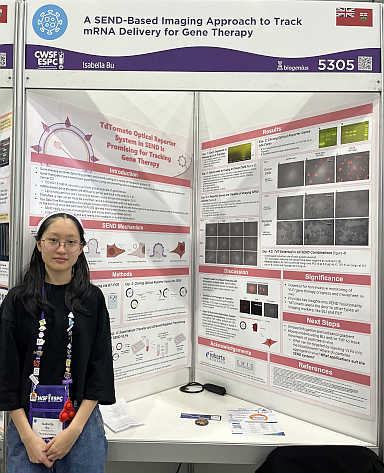
Isabella Bu
A SEND-Based Imaging Approach
London Central Secondary School
The transformative use of mRNA in the COVID-19 vaccine advanced gene therapy treatment options, but current delivery methods of gene therapies, such as lipid nanoparticles (LNs), cause unwanted side effects (Moghimi and Simberg, 2022). The Selective ENcapsidation for cellular Delivery (SEND) system, discovered by Segel et al., in 2021, allows selective packaging and delivery of mRNAs of interest in virus-like particles (VLPs). The SEND system is expected to be less aggravating than LNs, but cannot yet be tracked. A fluorescent reporter gene was added to the SEND system to determine the movement and uptake efficiency of VLPs and further analyze the SEND system’s components and their effects on cells. The results show that the engineered SEND system is applicable for tracking delivered gene therapies and invasive imaging of tumours in the body, but should be studied further for a more accurate understanding of system dynamics.
Silver Medal
Nanotechnology for Sustainable Society Award
University Scholarships
Carleton University
Dalhousie University
Mount Alison University
University of New Brunswick
University of Ottawa
Western University
